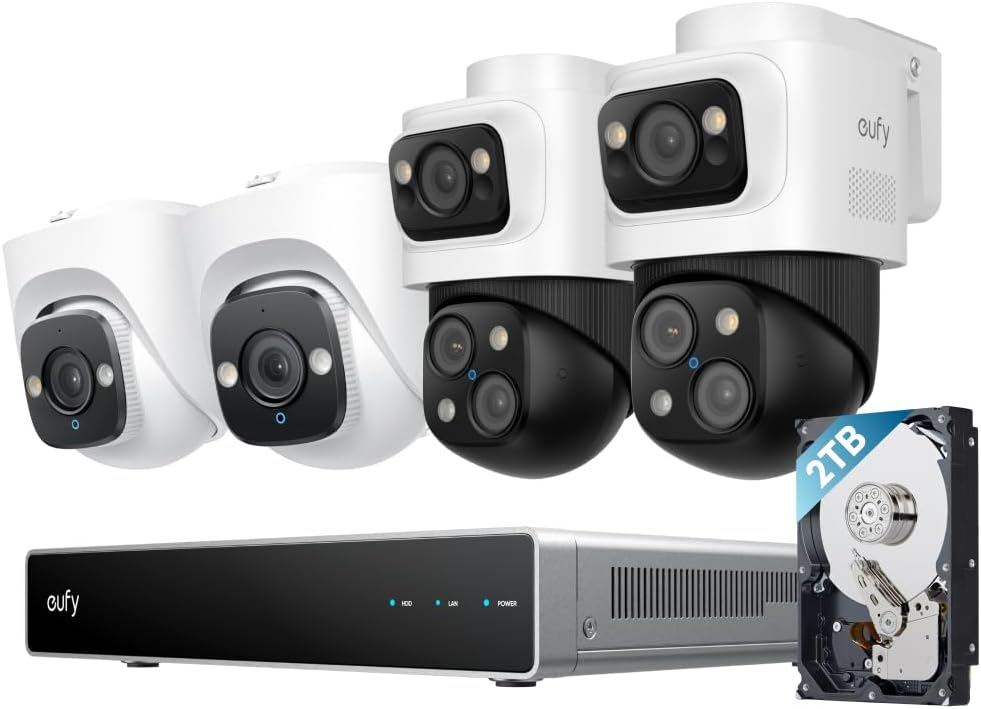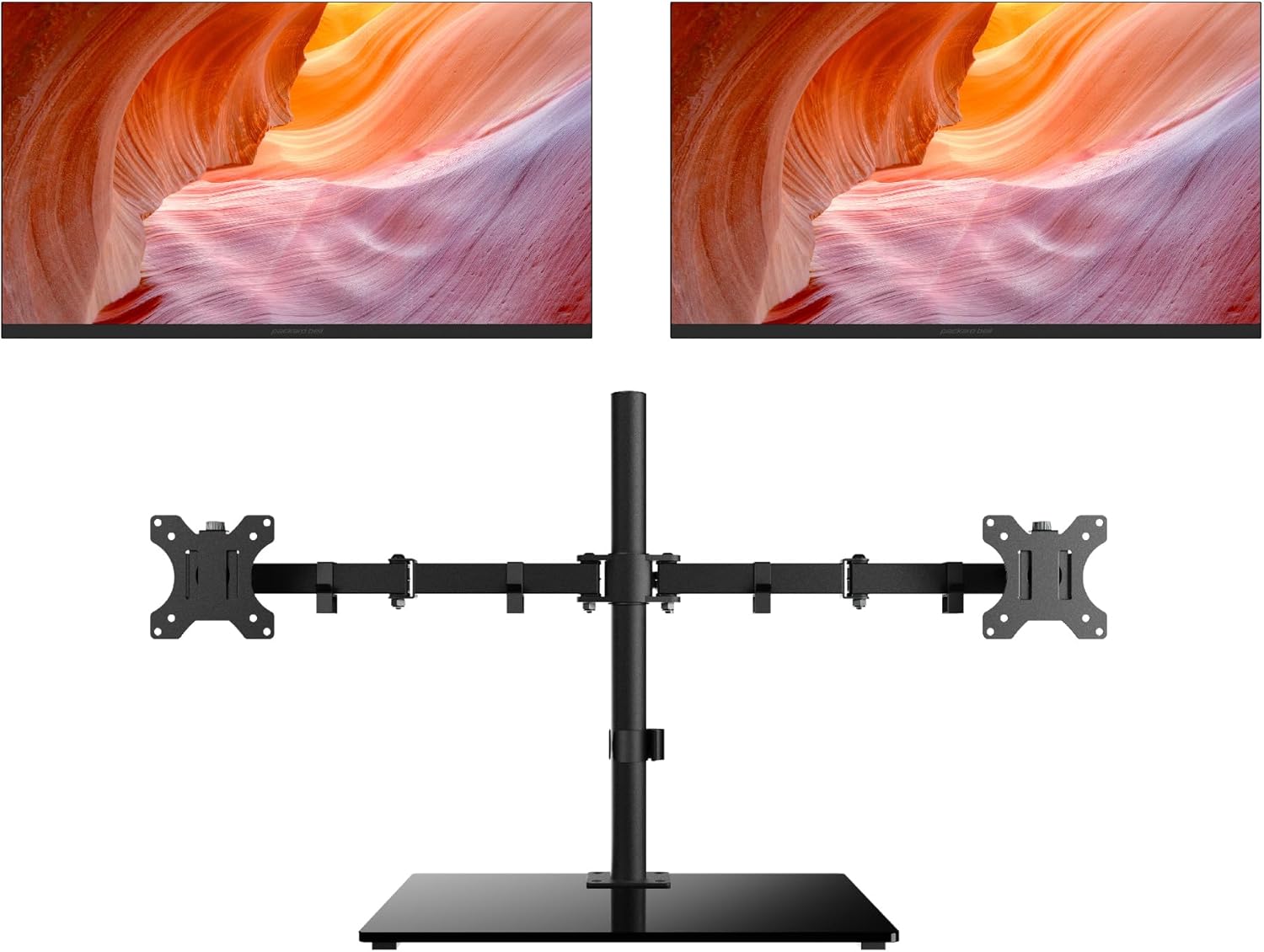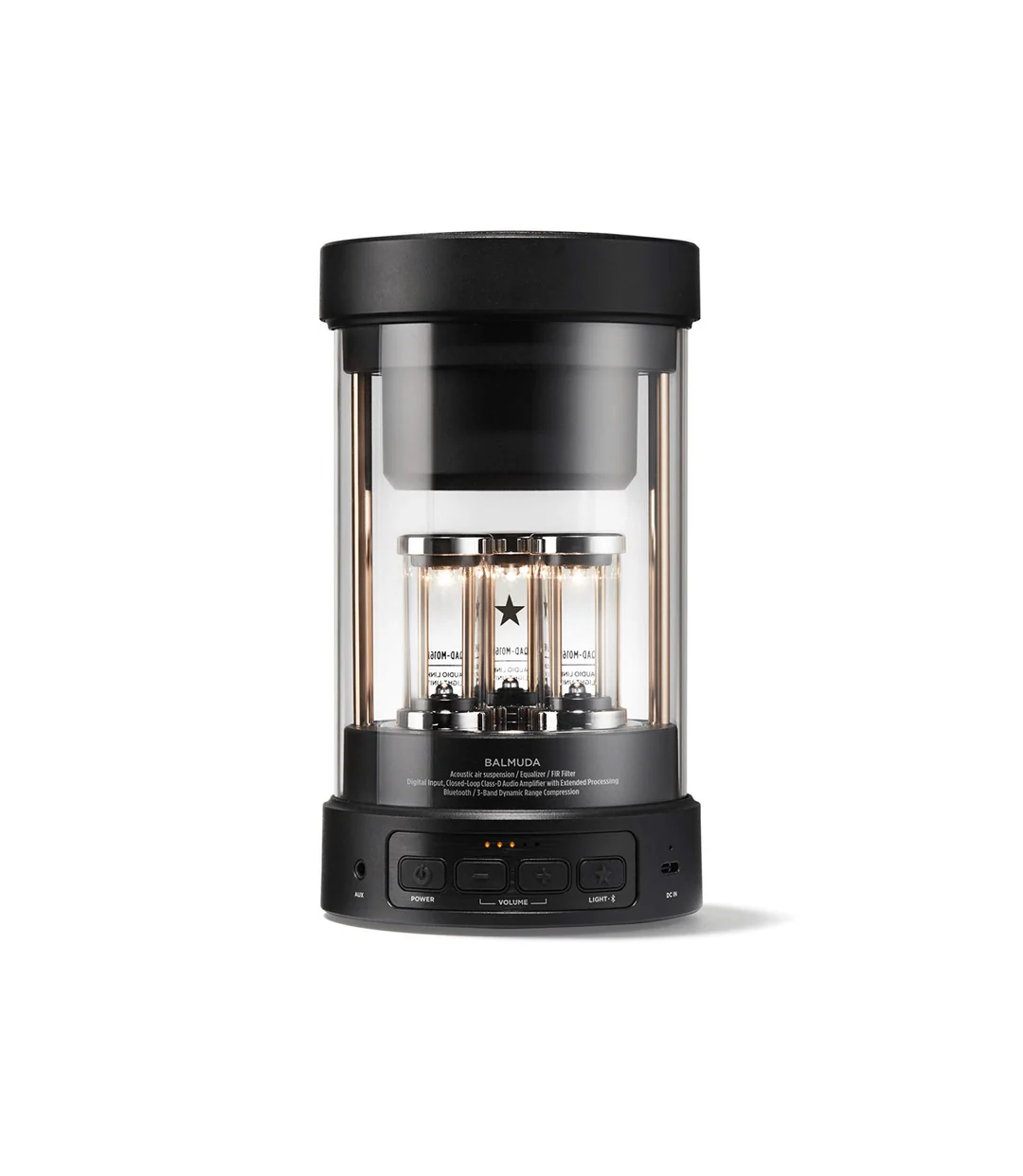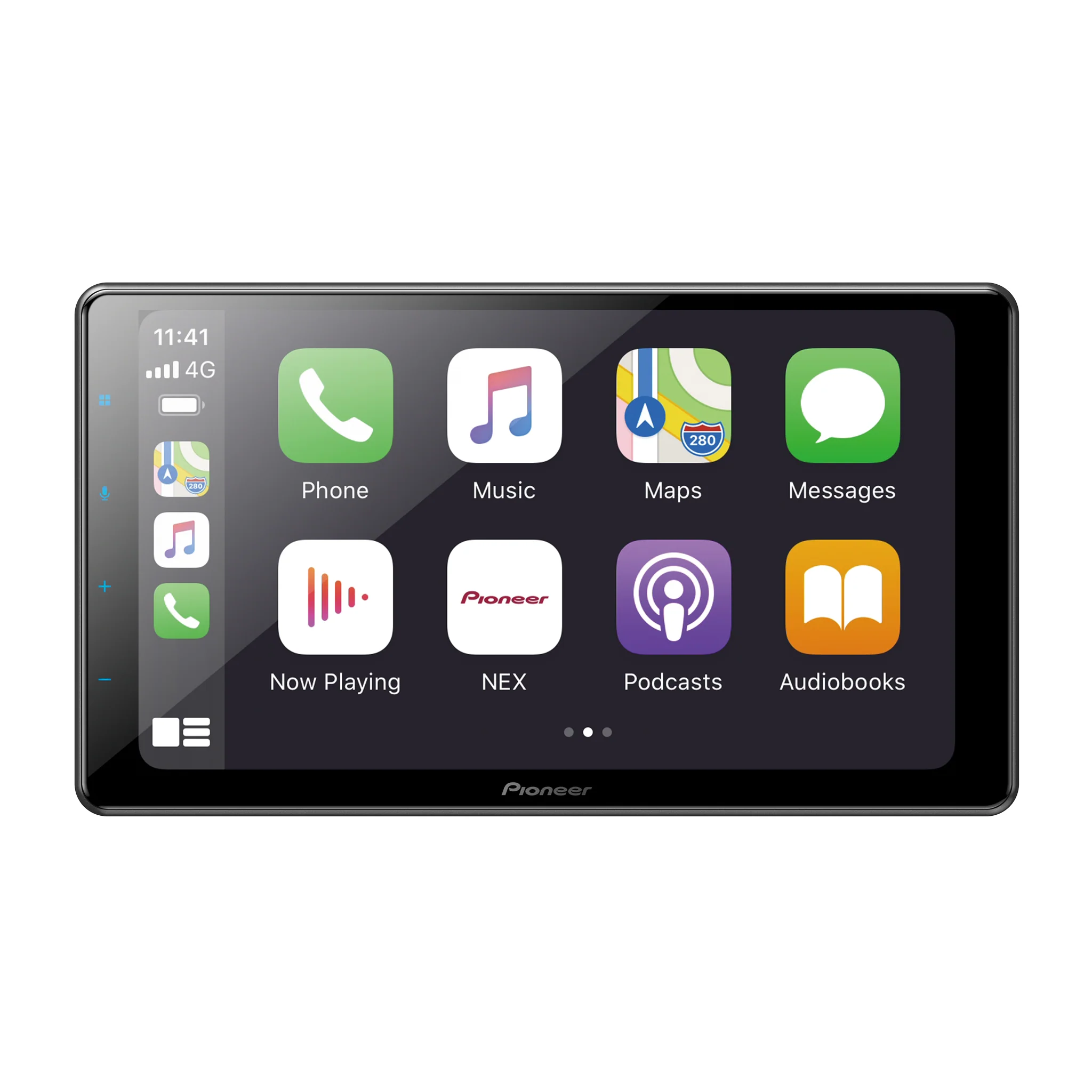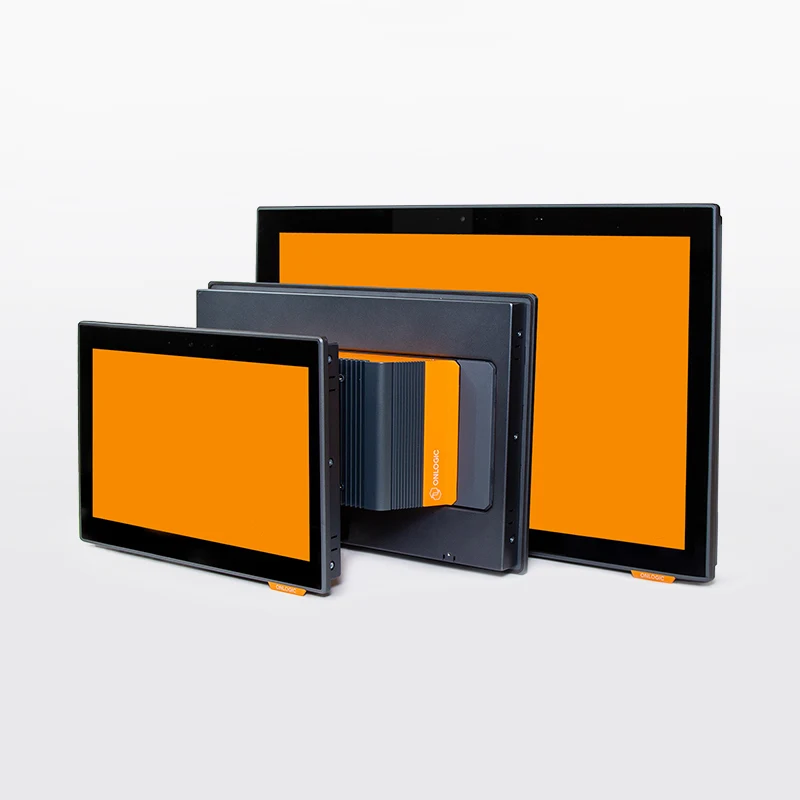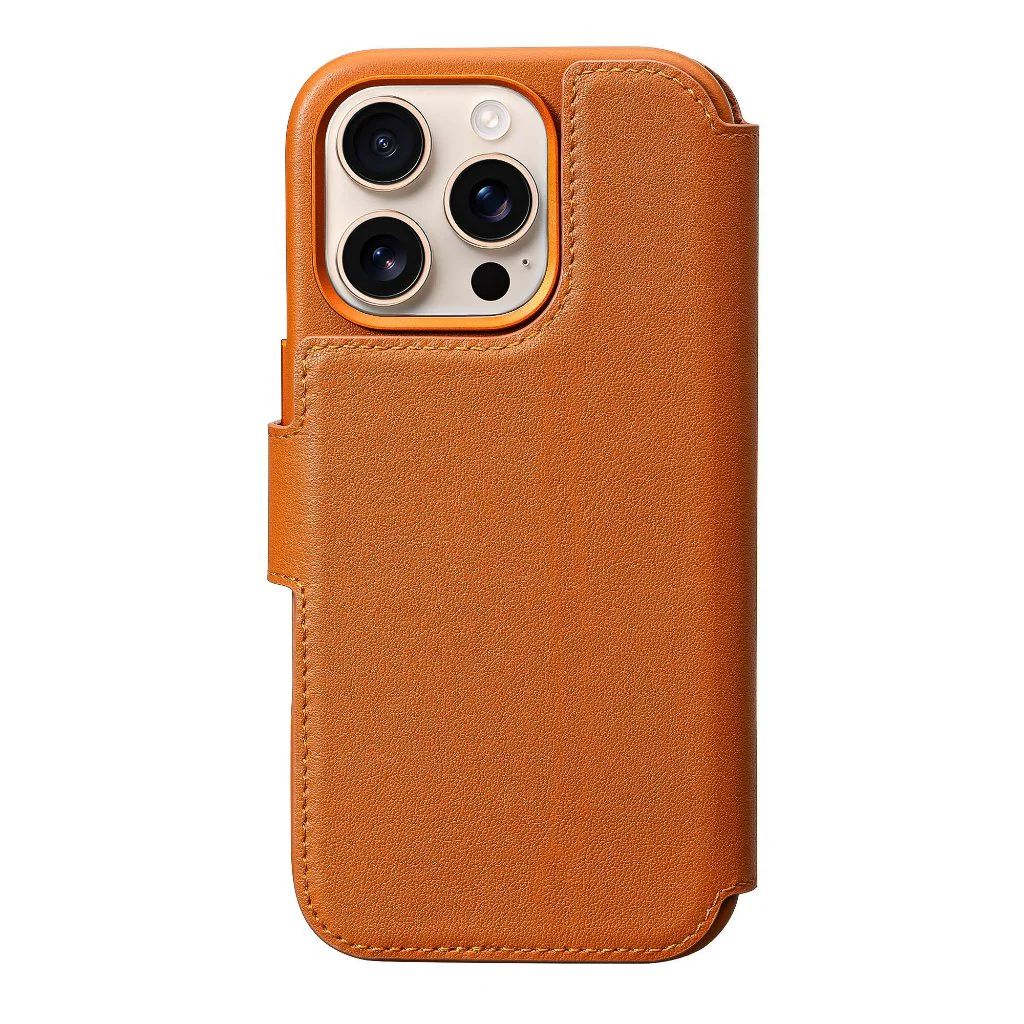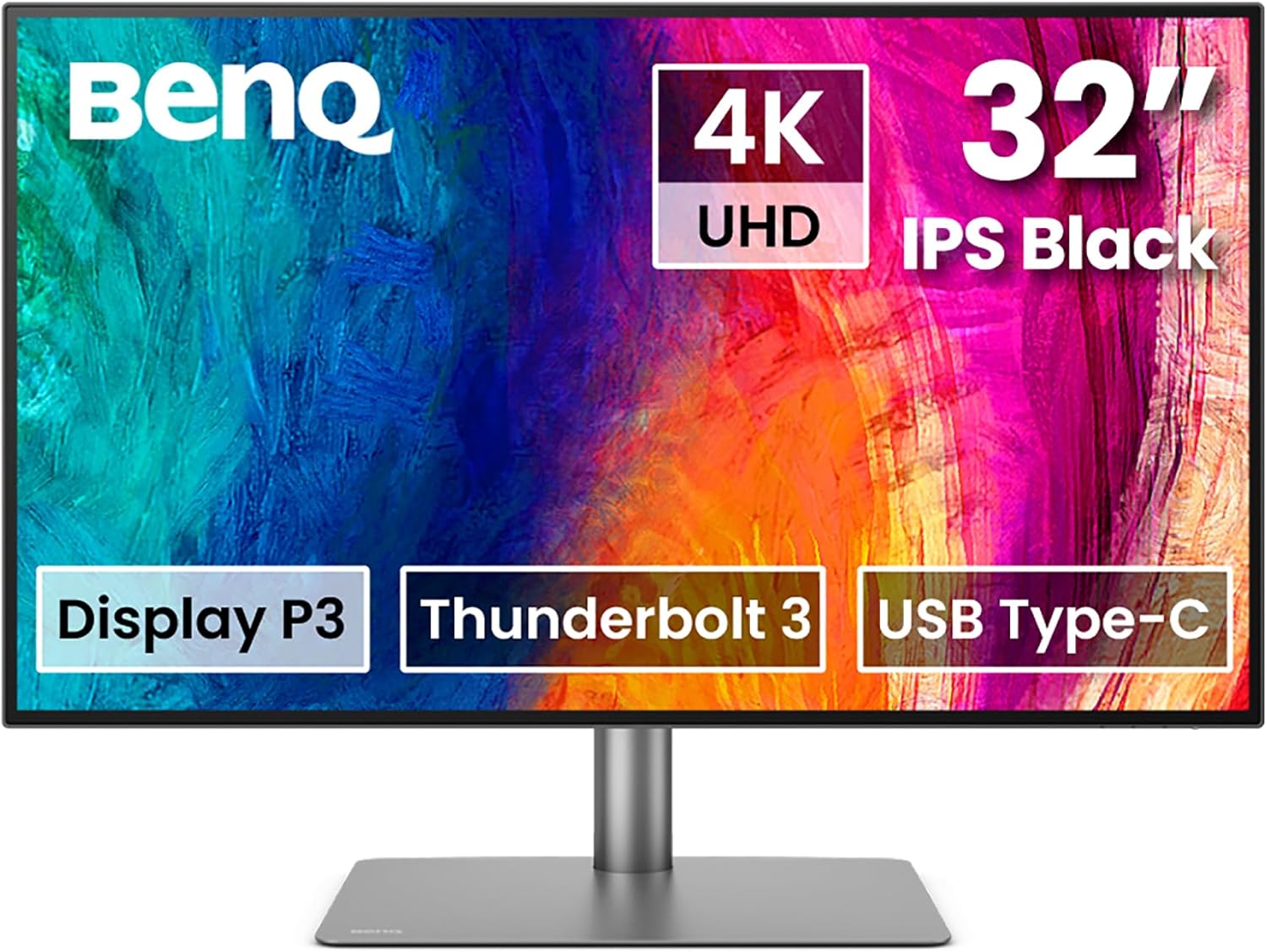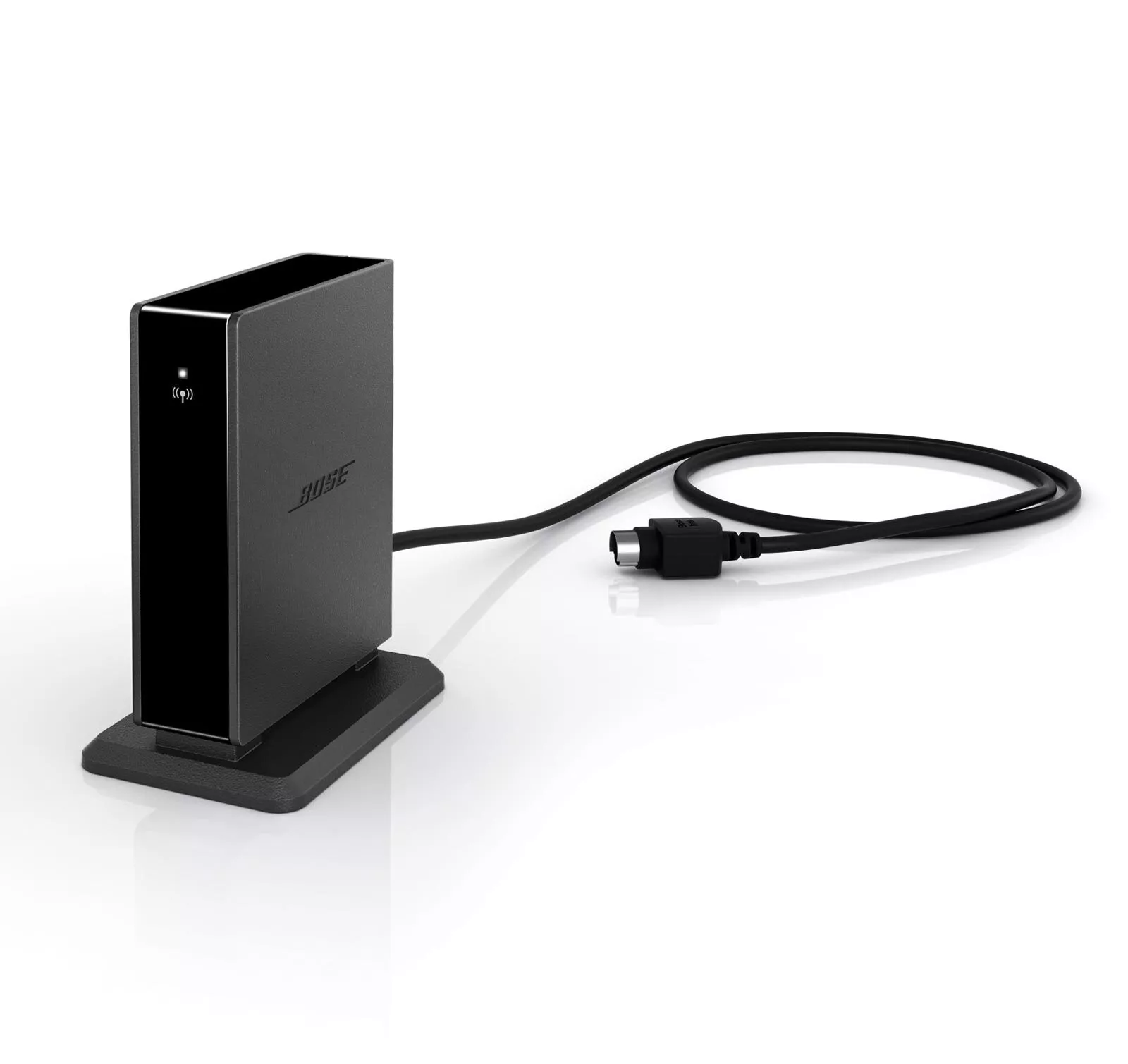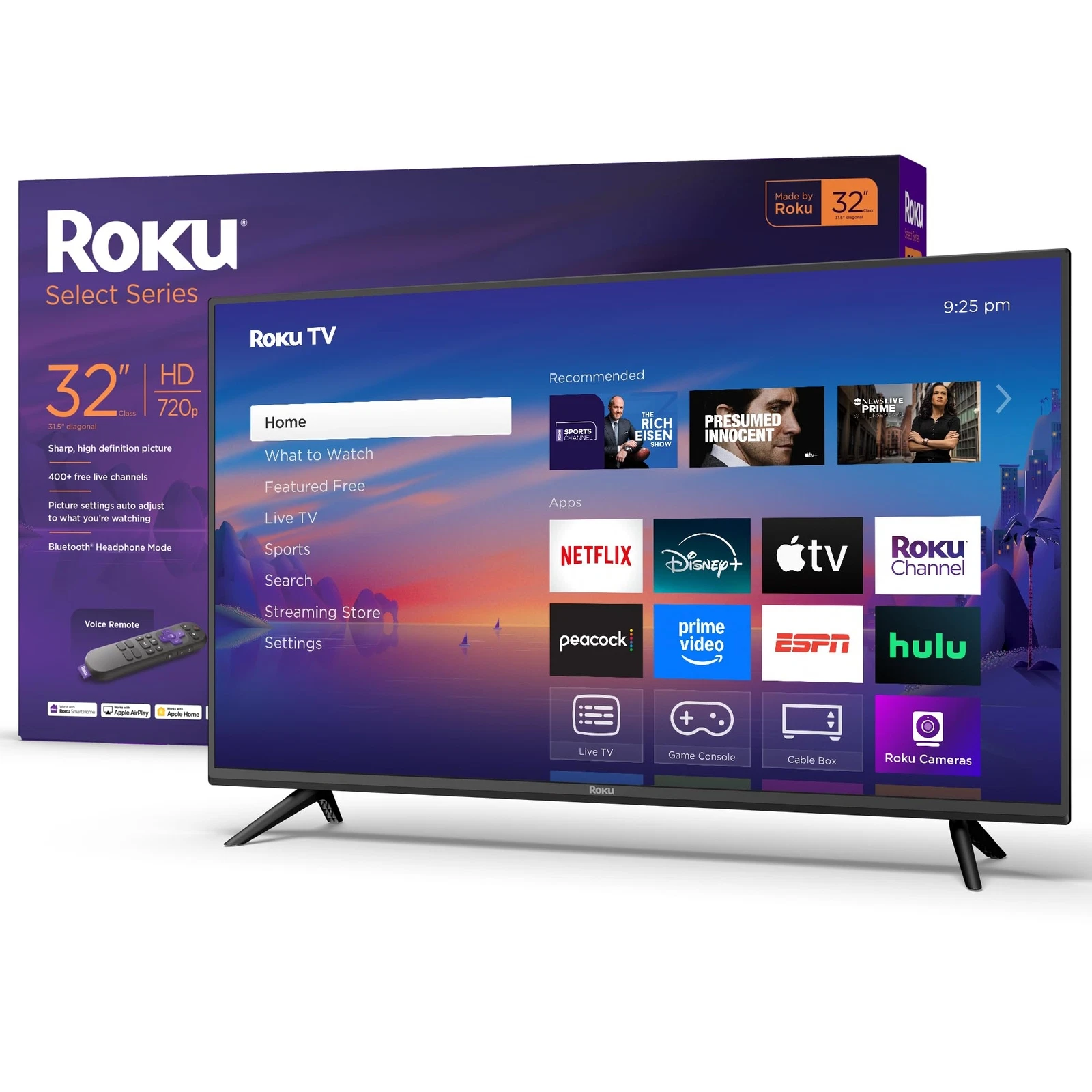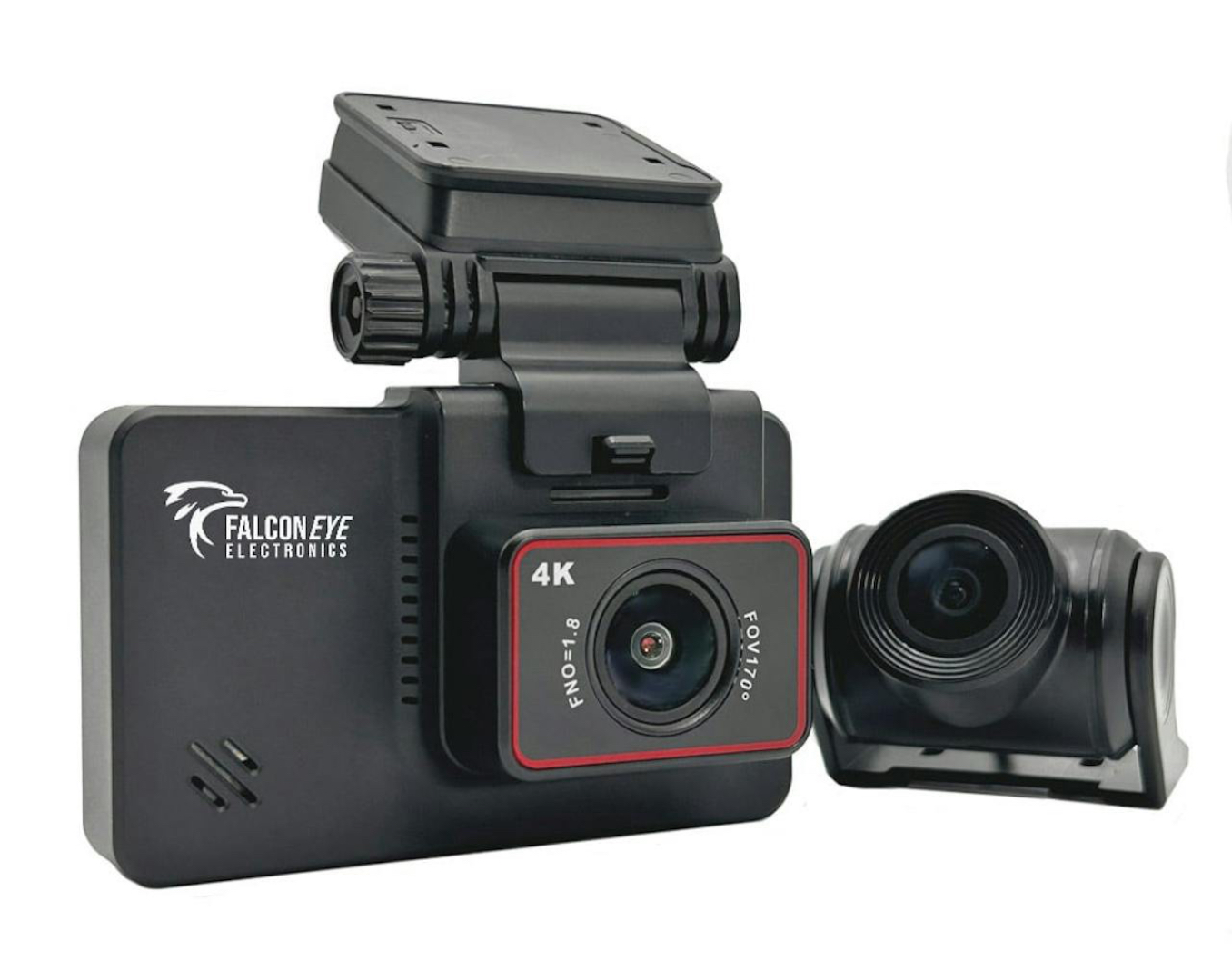Security tech should be like good infrastructure: invisible when everything’s fine, decisive when it matters. In this article, we’ll turn the moving parts of a modern wired security system into a simple, repeatable playbook—how to choose PoE (Power over Ethernet), why a dedicated NVR reduces friction, where to place cameras for real-world coverage, and how to tune alerts so you actually read them. Throughout, we’ll use the eufy PoE NVR Security Camera System S4 as a practical anchor for decisions around cabling, storage, and day-to-day monitoring.
Shop eufy PoE NVR Security Camera System S4
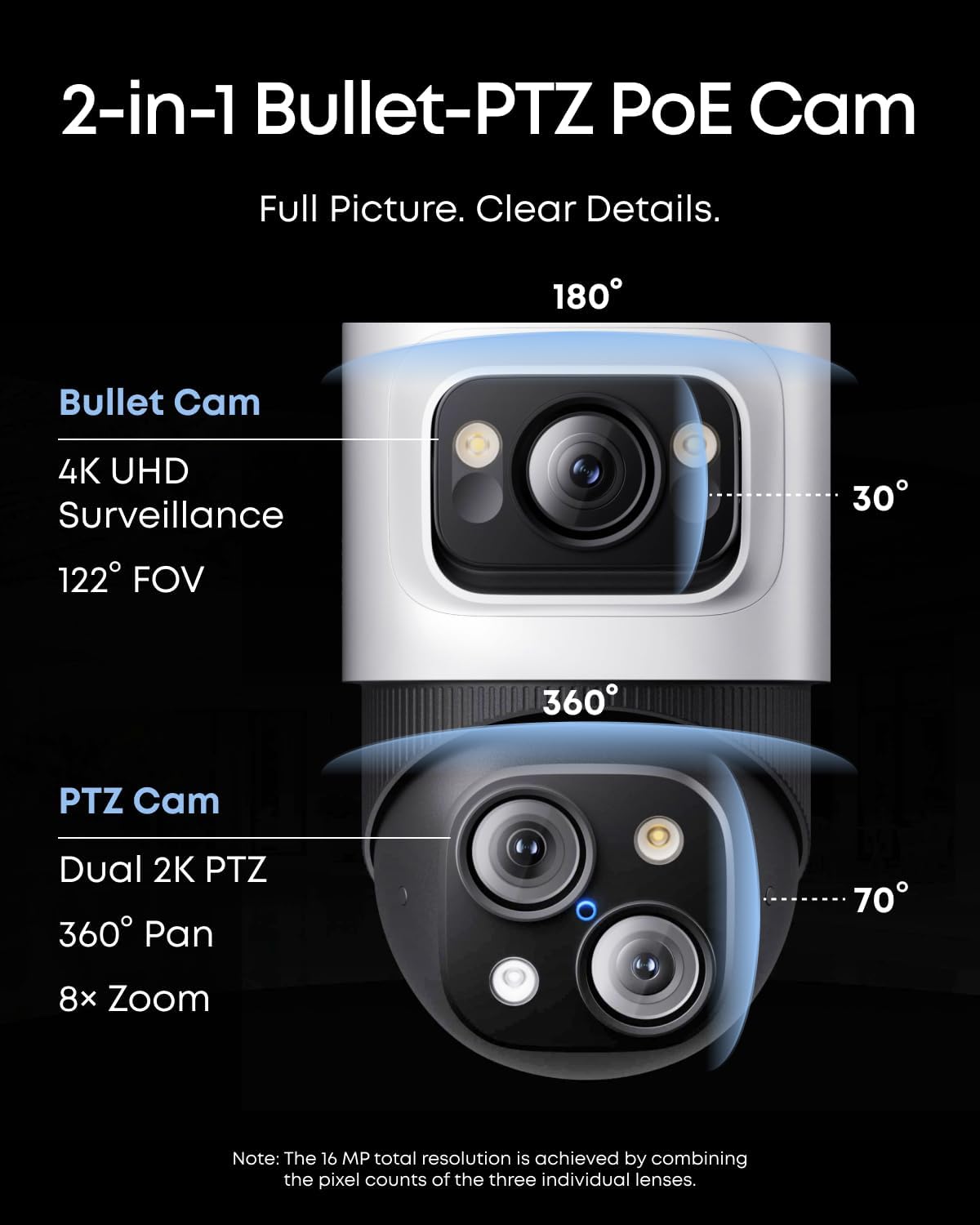
Why PoE + NVR Beats Piecemeal DIY (Most of the Time)
Wireless cameras are convenient—until batteries die, Wi-Fi hiccups, or a router reboot “ghosts” your feed. PoE hardwires power and data over a single cable, which means fewer failure points and cleaner uptime. A dedicated NVR (network video recorder) centralizes recording, playback, and user permissions in one place. The eufy PoE NVR Security Camera System S4 follows this reliability-first pattern: cameras connect via Ethernet, the NVR handles storage and schedules, and your phone becomes a viewer—not the fragile center of the system.
The System, Decoded: What Each Piece Actually Does
- PoE Cameras: Hardwired power + data over Cat 5e/6 cabling; no wall wart, no battery.
- NVR: Receives, records, and organizes video; provides local live view and playback; often exposes a secure remote app.
- Switch/PoE Ports: Many NVRs include PoE ports; otherwise a PoE switch powers cameras and uplinks to the NVR/LAN.
- Storage (drive bays/internal storage): Local disks keep continuous footage independent of the cloud; retention depends on camera count, resolution, and motion settings.
The upshot: with the eufy PoE NVR Security Camera System S4, you get a single ecosystem for capture, storage, and review—so you spend time on coverage and alerts, not on juggling apps and vendors.
Planning Your Coverage: Where to Put Cameras (and Why)
Think in zones, not surfaces. You’re protecting approaches to the property and decision points where people choose to linger or move on.
- Front Entry & Approach: A camera angled to see faces walking up (not just top-down at the doorstep) plus a wide view of the street-to-door path.
- Driveway/Garage: Capture vehicles entering/exiting; position to read plates without headlight glare (slight off-axis helps at night).
- Back Door / Side Gate: Secondary entries are common breach points; mount above reach, angled for faces.
- Yard / Perimeter: One camera covering the backyard and fence line reduces “unknowns,” especially at night.
- Interior (optional): One at a choke point (hallway/stairs) if you want redundancy; avoid private spaces.
Keep camera heights about 8–10 ft for face angle + vandal resistance. Keep IR lights clear of reflective surfaces (white soffits, shiny gutters) to prevent night bloom. The eufy PoE NVR Security Camera System S4 slots into this blueprint with consistent cabling runs and centralized recording.
Shop eufy PoE NVR Security Camera System S4
Cabling Made Simple: From “Where Do I Start?” to “Done”
- Cable Choice: Cat 6 is a solid default for distance and headroom; Cat 5e also works for typical homes.
- Home Runs vs. Hops: Run each camera cable directly to the NVR (or to a PoE switch that uplinks to the NVR). Avoid daisy-chaining.
- Routing: Use attic/basement chases; follow soffits outdoors in UV-rated conduit if exposed. Leave a drip loop outside the camera to divert water.
- Terminations: Use pass-through RJ45 connectors or pre-terminated patch cables if you’re new to crimping.
- Testing: A cheap Ethernet tester saves hours—verify each run before you mount the camera.
PoE is forgiving: once the cable is in, the eufy PoE NVR Security Camera System S4 will power the camera and bring it online without extra outlets or adapters at the mount point.
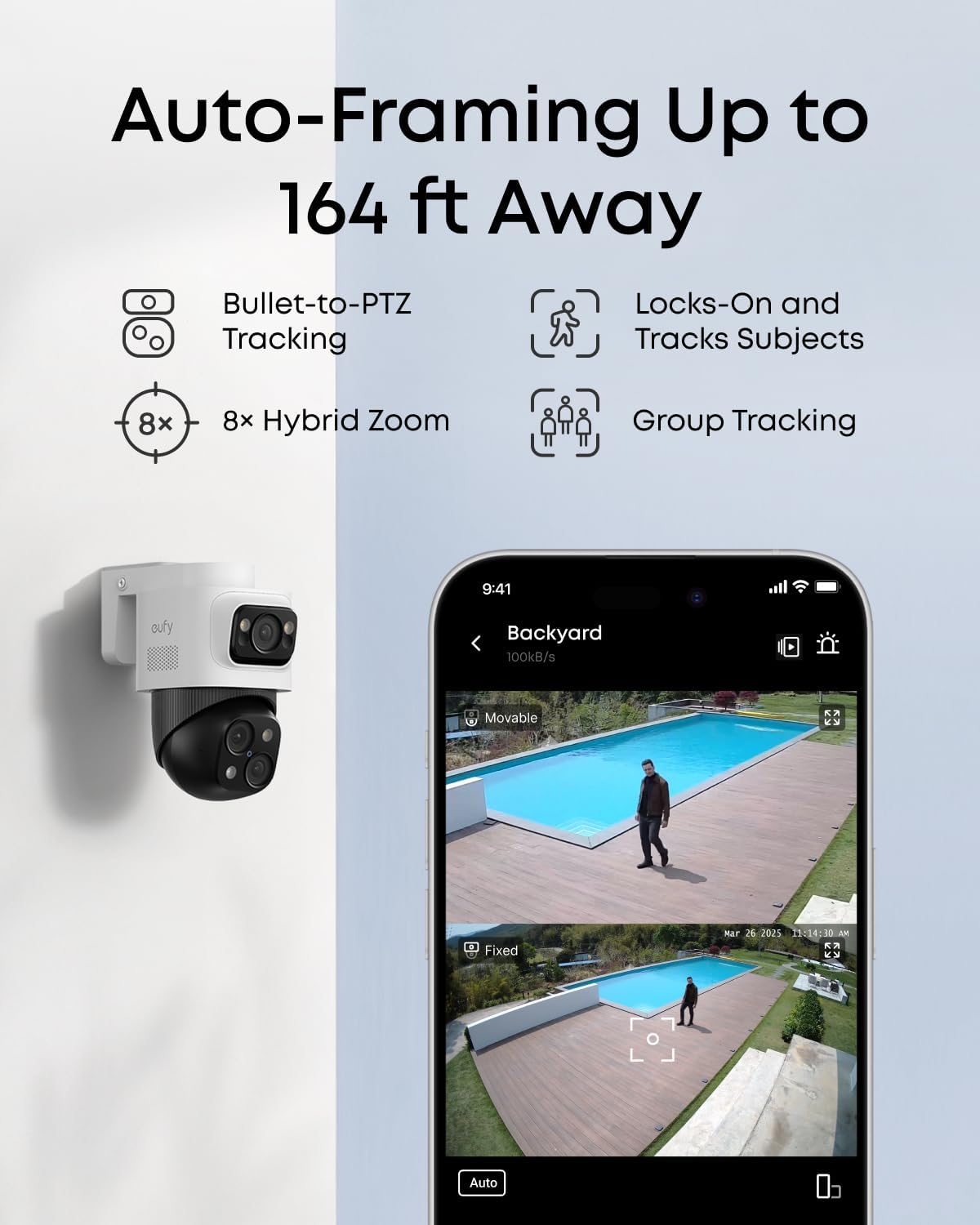
Recording Strategy: 24/7 vs. Motion (and a Practical Blend)
- Continuous 24/7: Best for certainty—nothing is missed; larger storage footprint.
- Motion-Only: Saves storage and speeds playback but depends on well-tuned detection zones.
- Hybrid: Continuous during late night, motion by day; or continuous for high-risk cameras (front/driveway) and motion for low-traffic views.
On the eufy PoE NVR Security Camera System S4, start hybrid: make your front/driveway cameras continuous and set others to motion. After a week, check disk usage and raise/lower motion sensitivity to balance retention with relevance.
Smart Detection Without Noise: Zones, Lines, and Schedules
False alerts train you to ignore real ones. Fix that on day one:
- Activity Zones: Outline driveways, paths, and door approaches; exclude trees, roads, sky.
- Line-Crossing Rules: Trigger only when motion crosses toward the property, not along the sidewalk.
- Object Filtering: Where available, prefer person/vehicle filtering over “any motion.”
- Schedules: Quiet hours for garden cams; higher alerting on front entry after dark.
- Notification Types: Use “thumbnail with timeline link.” Seeing context in one glance reduces app fatigue.
The eufy PoE NVR Security Camera System S4 is designed to help you tighten signals until your phone only buzzes when it should.
Shop eufy PoE NVR Security Camera System S4
Night Performance & Weather: Real-World Tweaks
- IR Reflections: Angle away from white soffits and walls to prevent IR bounce; a small tilt can fix “white fog” at night.
- Headlight Glare: For driveway cams, don’t aim straight down the car path—off-axis a few degrees keeps plates readable.
- Rain & Cobwebs: Keep the lens hooded where possible; a quick monthly microfiber wipe and a dab of safe repellent at the housing edge can reduce webs.
- Cold & Heat: PoE avoids battery sag; ensure cable slack for thermal expansion so connectors aren’t stressed.
Users, Privacy, and Sharing: Keep Control (But Make It Easy)
Create separate accounts for family or trusted neighbors with view-only or clip export roles. If you share an incident with authorities or insurance, export the original clip and keep a backup; avoid posting publicly unless you’ve redacted faces/plates and you’re comfortable with the privacy implications in your region. A good NVR like the one in the eufy PoE NVR Security Camera System S4 keeps the master recording local so you decide what leaves your network.
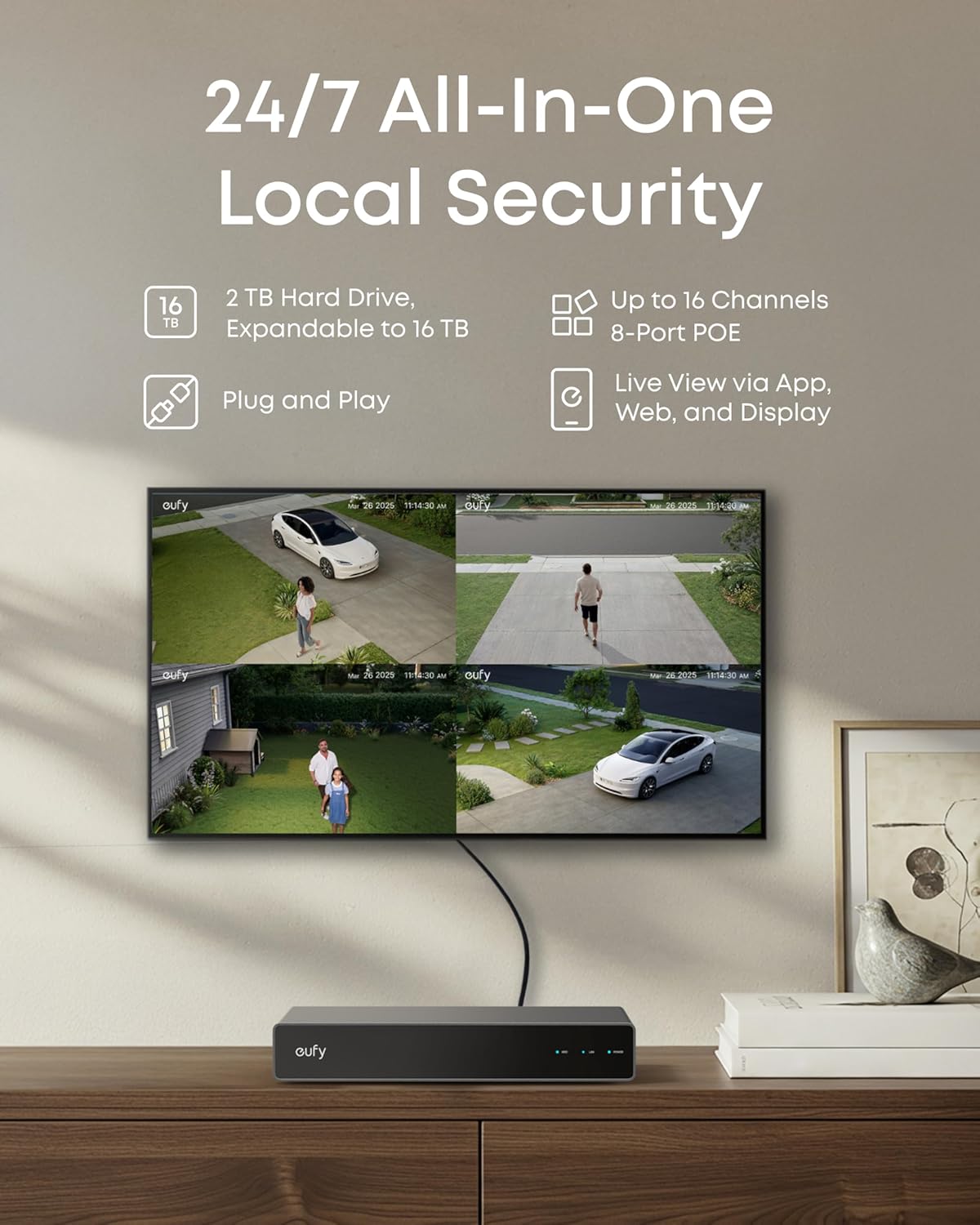
Maintenance That Actually Prevents Problems
- Firmware & App Updates: Quarterly check-in; newer builds often improve detection and night exposure.
- Drive Health: If the NVR allows, enable SMART checks or schedule a health test; drives are wear items.
- Cable & Seal Checks: After storms or heat waves, glance at exterior glands and drip loops.
- Retention Audit: Once a month, confirm you still have your target weeks of history; adjust motion/continuous ratios if needed.
Shop eufy PoE NVR Security Camera System S4
A Minimalist Setup Blueprint (Set It Once, Stop Tinkering)
- Resolution: Use the highest stable setting across all channels for clean zoom-in during review.
- Bitrate & Encoding: Choose the recommended default for your NVR; avoid “low bandwidth” modes unless your network is constrained.
- Recording Mode: Continuous for entry/driveway; motion for yard/low-traffic; revisit after a week.
- Detection: Person/vehicle where supported; zones limited to approaches; line-crossing toward the house.
- Notifications: Rich thumbnails; high priority for front door after dark, low for yard during daytime.
- Users: Admin for you; viewers for family; temporary share links for neighbors after incidents.
Follow this, and the eufy PoE NVR Security Camera System S4 becomes “infrastructure”—quiet, predictable, always ready.
Troubleshooting Quick Wins (When Something Feels Off)
- Missed Events: Expand zones slightly or switch from “person-only” to “person + vehicle” on driveways.
- Too Many Alerts: Reduce sensitivity, tighten zones, add line-crossing rules, and set daytime quiet hours.
- Night Glare/Overexposure: Angle cameras off-axis from headlights; reduce IR intensity if the menu allows.
- Playback Stutters: Check NVR LAN uplink; try direct HDMI viewing on the NVR to isolate a Wi-Fi bottleneck.
- Random Disconnects: Replace a suspect patch cable; verify PoE power on the port; update firmware.
Conclusion
Great security is a system, not a single spec. PoE gives you stable power and data; an NVR keeps your recordings local and dependable; smart placement and alert hygiene turn raw video into useful information. When you wire once, set practical recording rules, and maintain lightly, the eufy PoE NVR Security Camera System S4 fades into the background—until the day you need it. Then it’s the difference between a shrug and a timestamp.
Shop eufy PoE NVR Security Camera System S4
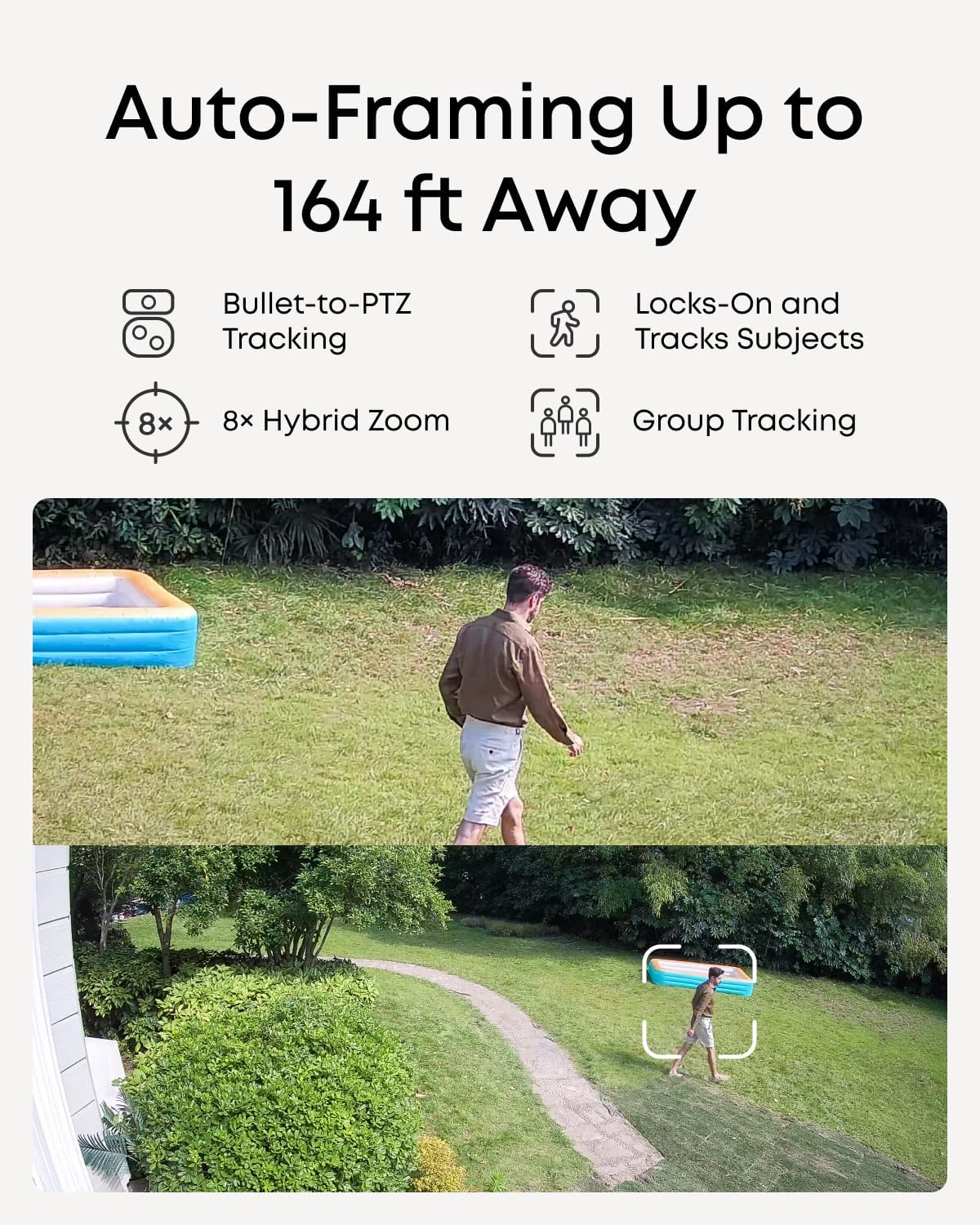
FAQ
- Do I need a separate PoE switch if the NVR has PoE ports?
Not necessarily. If the NVR includes enough PoE ports for your cameras, you can plug them in directly. Add a PoE switch only if you exceed the port count or need remote cable runs. - How much storage is “enough” on an NVR?
It depends on camera count, resolution, and whether you record 24/7 or motion-only. Start with your target retention (e.g., 2–4 weeks) and back into the disk size using the NVR’s estimates. - Can I mix continuous recording and motion recording?
Yes—and you should. Keep entry/driveway continuous for certainty and set lower-traffic views to motion to save space. - What’s the ideal camera height and angle?
About 8–10 ft high, slightly off-axis for driveways to avoid headlight blowouts, and angled to capture faces rather than just heads or hats. - How do I prevent alert fatigue?
Use zones to exclude busy streets, prefer person/vehicle filtering where available, add line-crossing toward the property, and schedule quiet hours for low-risk areas. - Is remote viewing secure?
Stick to the official app and keep the NVR and app up to date. Use strong passwords and, if offered, multi-factor authentication. Avoid exposing raw ports to the internet. - What if a camera goes offline randomly?
Swap the patch cable, test another PoE port, and check for firmware updates. If the issue follows the cable/port, that’s your culprit. - Can I export clips for insurance or police?
Yes. Export the original file from the NVR and keep a second copy. Share privately; avoid posting publicly unless you’ve redacted sensitive details and are comfortable with the privacy implications.

